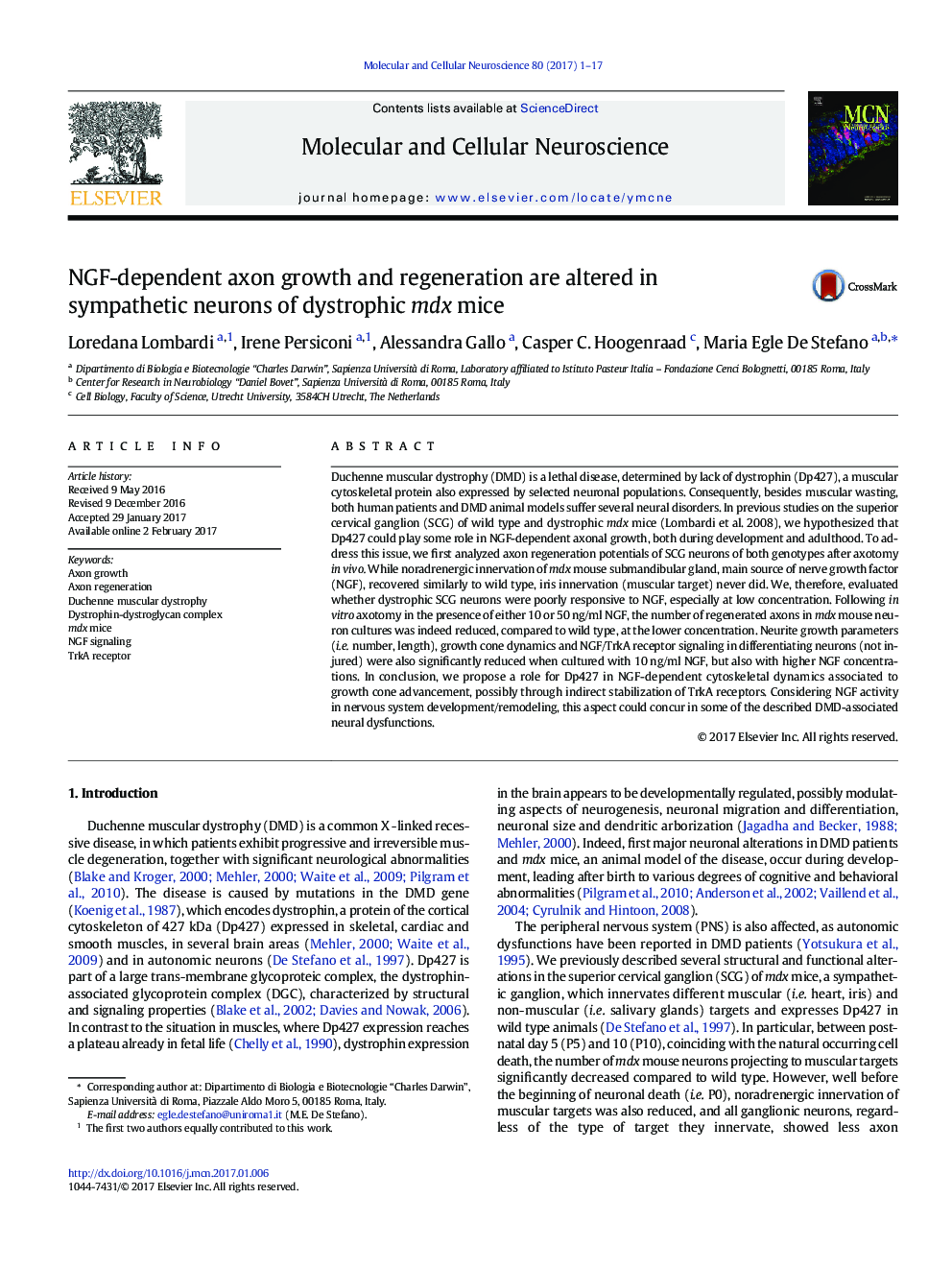| Article ID | Journal | Published Year | Pages | File Type |
|---|---|---|---|---|
| 5534375 | Molecular and Cellular Neuroscience | 2017 | 17 Pages |
â¢Sympathetic neurons of mdx mice are less responsive to NGF compared to wild type.â¢Dystrophin (Dp427) is important for NGF-dependent axonal growth and regeneration.â¢Lack of Dp427 alters growth cone dynamics of mdx mouse sympathetic neurons in vitro.â¢Axon growth and regeneration of NGF-dependent autonomic neurons are processes needing accurate evaluation in DMD patients.
Duchenne muscular dystrophy (DMD) is a lethal disease, determined by lack of dystrophin (Dp427), a muscular cytoskeletal protein also expressed by selected neuronal populations. Consequently, besides muscular wasting, both human patients and DMD animal models suffer several neural disorders. In previous studies on the superior cervical ganglion (SCG) of wild type and dystrophic mdx mice (Lombardi et al. 2008), we hypothesized that Dp427 could play some role in NGF-dependent axonal growth, both during development and adulthood. To address this issue, we first analyzed axon regeneration potentials of SCG neurons of both genotypes after axotomy in vivo. While noradrenergic innervation of mdx mouse submandibular gland, main source of nerve growth factor (NGF), recovered similarly to wild type, iris innervation (muscular target) never did. We, therefore, evaluated whether dystrophic SCG neurons were poorly responsive to NGF, especially at low concentration. Following in vitro axotomy in the presence of either 10 or 50Â ng/ml NGF, the number of regenerated axons in mdx mouse neuron cultures was indeed reduced, compared to wild type, at the lower concentration. Neurite growth parameters (i.e. number, length), growth cone dynamics and NGF/TrkA receptor signaling in differentiating neurons (not injured) were also significantly reduced when cultured with 10Â ng/ml NGF, but also with higher NGF concentrations. In conclusion, we propose a role for Dp427 in NGF-dependent cytoskeletal dynamics associated to growth cone advancement, possibly through indirect stabilization of TrkA receptors. Considering NGF activity in nervous system development/remodeling, this aspect could concur in some of the described DMD-associated neural dysfunctions.
